ECONOMIC REVIEW
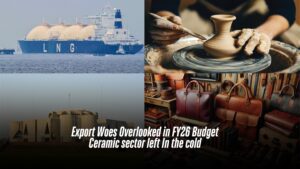
Export Woes Overlooked in FY26 Budget Ceramic sector left in the cold
The interim government’s Tk 7.9 trillion budgets for FY2025-26 have drawn criticism for lacking bold measures to strengthen export-oriented sectors, including garments, leather, pharmaceuticals, and ceramics—key drivers of Bangladesh’s economy. Despite persistent demands from businesses, the budget offers no concrete plans to modernize ports, ensure stable gas and electricity supply, or reduce logistical hurdles that cripple competitiveness. The leather sector, struggling with compliance and environmental challenges, finds no support for factory upgrades, while pharmaceuticals—a growing export segment—receive no incentives for R&D or market expansion. Similarly, the ceramic industry, which relies on imported raw materials, sees no relief from high production costs. With private investment stagnant and unemployment high, industry leaders argue that the budget missed a crucial opportunity to implement structural reforms, widen the tax net, and boost global competitiveness—essential steps for sustaining export growth and economic stability. Youth Job Crisis, Poverty Fight Missing in Action The interim government’s first budget has failed to address the core grievances that sparked July 2024’s mass uprising — unemployment and inequality. Despite 20% graduate unemployment and 30% youth disengagement from work or education, the budget offers only token funds for self-employment schemes without structural solutions. Social safety nets saw marginal increases, while allocations for education and health have remained stagnant. With 40 million below the poverty line—and a World Bank warning of worsening poverty—the budget lacks comprehensive anti-poverty strategies. Economists describe it as a “stopgap budget” that maintains the status quo rather than addressing the employment crisis that fueled last year’s protests. The absence of bold job creation measures suggests continued economic discontent among the youth. Budget Targets Overly Ambitious: Economists Economists have raised concerns over Bangladesh’s proposed FY2025-26 budget, calling its revenue, growth, and inflation targets unrealistic given current economic challenges. While noting some positive measures like reduced VAT on LNG and lower advance taxes, they highlighted structural weaknesses in tax administration and insufficient focus on job creation as key risks. Revenue & Inflation Doubts The revenue collection goal was seen as unattainable without tackling tax evasion, while inflation projections were deemed too optimistic amid persistent price pressures. Reforms Missing Experts pointed to a lack of meaningful reforms in customs, logistics, and labor markets, with particular concern over stagnant education and healthcare spending despite their importance for long-term growth. Implementation Challenges While some trade facilitation efforts like the National Single Window were acknowledged, economists warned that bureaucratic inefficiencies and resistance to change continue to hinder progress on critical economic reforms. Little to No Relief for Ceramic Sector The ceramic sector received no significant fiscal relief in the recently passed national budget for FY2025–26, despite its growing contribution to import substitution, employment generation, and sustainable construction, according to stakeholders. The Bangladesh Ceramic Manufacturers & Exporters Association (BCMEA) has expressed disappointment over the government’s failure to address longstanding demands, which could have reduced production costs and made locally produced tiles and sanitary ware more competitive against imports. The BCMEA had proposed that customs authorities allow up to 35% deduction during import-stage valuation for moisture, unusable chemical substances, and volatile components in imported raw materials such as China Clay (HS Code 2507.00.10) and Ball Clay (HS Code 2508.40.10). These clays, entirely import-dependent, naturally contain 30–35% wastage components, and further losses occur during processing—sometimes up to 40%. However, import duties are still calculated on 100% of the gross weight, significantly increasing costs for producers. The association also demanded the withdrawal of the 15% supplementary duty (SD) on locally produced tiles (HS Code 69.07) and the 10% SD on sanitary ware (HS Code 69.10). According to the BCMEA, these products are no longer considered luxury items but are integral building materials, widely used in both residential and commercial construction. They also play a vital role in promoting public health and environmental sustainability. “The government talks about affordable housing and sanitation for all, yet continues to impose unnecessary duties on locally made essential products,” said Moynul Islam, President, BCMEA, adding that, “If these unjustified duties are not withdrawn, local manufacturers will lose competitiveness, while consumers will continue to suffer from high prices amid inflation.” He also pointed out that the absence of incentives for value-added manufacturing contradicts the government’s broader goals of economic diversification and green growth. The sector, which heavily relies on imported raw materials, has already been hit hard by the appreciating US dollar and rising freight costs. The BCMEA reiterated that removing these fiscal burdens would not only lower production costs and market prices but also encourage further investment and expansion in domestic manufacturing, reducing dependence on imports and generating more employment. Economist Questions Budget’s Effectiveness Dr. M Masrur Reaz, Chairman of Policy Exchange Bangladesh, expressed disappointment that the proposed budget lacks clear roadmaps for structural reforms, employment generation, and investment stimulation. He pointed out the absence of bold measures to address the country’s core economic challenges. The economist described the budget’s revenue and growth targets as overly optimistic given the current political uncertainty and post-election economic climate. “Inflation may have eased slightly, but the government’s projections remain unrealistic without substantial investment and job creation,” Reaz stated. While not opposing the principle, Reaz questioned the timing of proposed salary increases for government employees, suggesting the measure may be premature given fiscal constraints. Reaz offered targeted recommendations for key sectors: Agri-business / Fast-Moving Consumer Goods (FMCG): Formalize informal trade channels and improve tax compliance. Telecommunications: Reduce tax burdens to accelerate digital inclusion. Tobacco: Maintain current tax structures to combat illicit trade while ensuring revenue stability. The economist acknowledged some positive steps including: Reduced VAT on LNG imports. Lower advance taxes on raw materials. Decreased land registration fees. However, he criticized: Increased VAT on yarn. Higher turnover taxes for loss-making businesses. Lack of initiatives for rural women’s employment. Dr. Reaz concluded that while containing some business-friendly elements, the budget ultimately fails to deliver transformative changes needed to address Bangladesh’s employment crisis and economic stagnation. The absence of comprehensive poverty reduction
Read More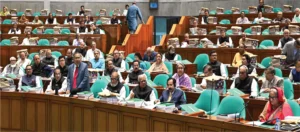
National Budget Thru Turbulent Waters Ceramic Industry Ignored in Budget
The recently unveiled Tk 7.97 trillion national budget for the 2024-25 fiscal year for Bangladesh aims to bringing a balance between controlling inflation and attaining economic growth. Economists, however, caution that higher borrowing and increased taxes on certain goods may prolong inflationary pressures. The budget’s reliance on domestic borrowing could lead to a “crowding-out effect,” restricting financing for businesses, particularly SMEs. Despite a target of 6.75 per cent GDP growth and plans to reduce inflation to 6.5 per cent, achieving these goals is deemed challenging. The budget proposes revenue of Tk 5.45 trillion with NBR tax amounting to Tk 4.80 trillion, leaving a Tk 2.56 trillion deficit to be primarily financed through bank borrowing, which may prompt money printing by the central bank and further inflation. Economists welcome the conservative approach but criticise the plan to increase electricity prices, potentially exacerbating inflation. The budget also includes initiatives for digital transformation and job creation in the IT sector, aiming to attract foreign investment. However, with foreign funding dwindling and significant tax increases on various goods, the effectiveness of these measures in achieving the stated economic targets remains uncertain. Bangladesh’s economic landscape is currently beset by numerous challenges, including stagnant investment, mounting debt repayment obligations, sluggish external sector growth, dwindling foreign exchange reserves, a fragile financial sector, tepid economic expansion, unemployment woes, and widening inequality, apart from soaring inflation. The proposed budget must confront immediate hurdles head-on through targeted budget allocations and fiscal policies. Although the budget is crafted for a single fiscal cycle, it serves as the conduit for translating the government’s economic strategies and political vision into reality. Hence, the proposed budget assumes paramount importance in tackling pressing issues such as safeguarding the interests of the impoverished, low-income, and lower-middle-income households, as well as addressing short to medium-term challenges such as fostering robust economic growth and curbing inequality. Given the prevailing economic exigencies, the FY2024-25 budget must pivot on four critical areas. Dr. Muhammad Abdul Mazid, a former chairman of the NBR, emphasised that this year’s budget cannot be compared to those announced in the past 8-10 years due to the turbulent global economy and several macroeconomic challenges facing Bangladesh. These challenges include a reserve crisis, dollar devaluation against the Bangladeshi Taka, higher inflation rates, and various governance issues. He asserted that overcoming the hurdles facing Bangladesh’s economy in the national budget will be difficult all of a sudden and in a shorter period. Instead, the government should focus on shaping a roadmap to navigate these crises. Dr. Mazid recommended that the budget should not follow the typical patterns of previous fiscal years; rather, it should include reforms in fiscal and monetary policy to address inflation, the dollar crisis, and reserve issues. Additionally, he suggested the formation of a banking commission to address loopholes in the banking sector. To curb inflation, the National Board of Revenue (NBR) could reduce duties on certain products, but effective market monitoring and management are essential to realise the benefits of such duty reductions. Strengthening the NBR’s capacity is crucial for enhanced revenue realisation. Moreover, Dr. Mazid stressed the importance of allowing concerned government organisations, such as the Anti-Corruption Commission (ACC), to operate independently to ensure effective governance. Ceramic Industry Overlooked The ceramic industry, part of the private manufacturing sector, has been significantly overlooked in the proposed national budget. Leaders of Bangladesh’s ceramic sector are urging for the removal of the 15 per cent supplementary duty on local tiles and the 10 per cent duty on domestic sanitary products. They point to rising raw material and gas prices, which have increased production costs. By eliminating these duties, they believe consumer prices would decrease. Md Shirajul Islam Mollah, a Member of Parliament and President of the Bangladesh Ceramic Manufacturers and Exporters Association (BCMEA), had previously proposed removing additional duties on raw material imports and increasing tariffs on foreign ceramic products to the National Board of Revenue (NBR) before the 2024-25 fiscal year’s budget announcement. These measures would reduce imports, save foreign exchange, and boost employment in the country. Despite the relevance of these proposals, none were addressed in the budget. The domestic ceramic market, valued at Tk 8,500 crore. Although domestic companies control over 80 per cent of the market, they face tough competition from imports due to high production costs. On one hand, due to the dollar crisis, L/Cs (letters of credit) are not being opened for importing sufficient raw materials and machinery. Additionally, despite high prices, necessary gas for producing finished goods is not being supplied. On the other hand, amidst dollar crisis, the Bangladesh Bank has announced a second term reduction in cash incentives for ceramic exports—from 10% to 6%—within a span of six months. Meanwhile, the cost of doing business continuously increases. Over the past year and a half, Bangladesh has received loans from the IMF in three installments, but despite implementing several conditions attached to the loan, there has been no such improvement; rather than deterioration. Addressing Fiscal Challenges Economists believe, in the face of daunting economic hurdles, Bangladesh must embark on a prudent fiscal course to steer through turbulent waters. With inflationary pressures mounting and investment stagnating, the budget for the 2024-25 fiscal year demands meticulous attention to fiscal prudence. The government’s traditional reliance on banking sector borrowings to bridge budget deficits exacerbates interest payment burdens amidst constrained fiscal space. Hence, a judicious fiscal consolidation strategy, entailing restrained spending and bolstered tax collection efforts, emerges as imperative. Empowering the Social Sector While substantial investments have buoyed physical infrastructure, the social sector languishes due to chronic underfunding. Education and healthcare sectors, in particular, warrant heightened attention, with allocations in FY2024 falling woefully short of requirements. Fostering human capital development through increased expenditure on education, healthcare, and skills development is indispensable for sustainable growth and inclusivity. Facilitating Small Business Growth Small businesses, the lifeblood of the economy, must be empowered through facilitated access to finance. The banking sector’s burgeoning non-performing loans pose a formidable barrier to lending, stifling entrepreneurial endeavours. Elevating
Read More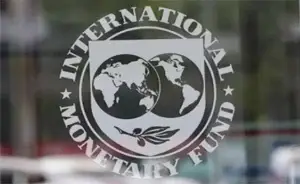
Economy in the Doldrums with Inflationary Pressure, Dollar Crisis
Bangladesh sees the end of 2023 with a huge deficit in its financial accounts, the widest gap between foreign currency income and expenses in its history. Consequently, the Bangladesh Bank is struggling to arrest the decline in foreign exchange reserves. This has led to a record imbalance in the overall balance of payments. The repercussions of this financial strains have extended to the commoners and made the fiscal year 2023-24 exceptionally challenging. Despite assurance from the Finance Minister in his budget speech that inflation would be contained at 5.6 per cent, average inflation rate was 9.2 per cent, intensifying the economic pressure and exacerbating the burden of soaring commodity prices on the ordinary people.
Read More
Is Bangladesh’s Economy at its Peril
Import dependency in energy sector increasing foreign exchange crisis One persistent issue that continues to affect the Bangladesh’s economic landscape is inflation. Inflation, the rising cost of goods and services over time, poses a significant challenge to both low-income households and industries alike. Recent data from the Bangladesh Bureau of Statistics (BBS) paints a grim picture: Food inflation has rocketed to 12.54 per cent, its highest in 11 years, pushing countless households into financial uncertainty. Concurrently, Bangladesh’s foreign currency reserves have plummeted $1.62 billion within 20 days, a staggering decline from $23.06 billion foreign exchange reserves recorded at the end of August. Fueled by a decline in remittances, stagnant exports and increased import pressures, these economic tremors have created certain economic uncertainties. Understanding Inflation Before examining the effects of inflation, it’s crucial to understand the factors driving it. In Bangladesh, inflation is now driven by cost-push factors such as increased producer spending and rising electricity and gas prices, particularly fuel oil, transport and also corruption cost with volatile exchange rates and dollar crisis. In recent years, Bangladesh has experienced an upward trend in inflation rates, affecting the lives of millions. Disproportionate Impact on Low, Fixed-Income Groups Almost all people of limited income and lower middle class, middle-class families are bearing the brunt of the pinching inflation as their earnings often fail to keep pace with rising prices. These households find it increasingly challenging to afford basic necessities. The burden of inflation extends to housing, education, healthcare, and transport. High inflation has been prevailing in the country for a long time. However, the situation has worsened in recent times, as shows government statistics. Another major problem with the inflation is worker unrest. This in turn increases the pressure on the wages of the workers and consequently increases the cost of production. Which increases the price of the product and ultimately reduces the demand. Surging Food Inflation 11-Year High The Bangladesh Bureau of Statistics issued an inflation update on September 11, revealing that food inflation had surpassed 12.5 per cent. The BBS data indicated that food inflation reached 12.54 per cent in August. The last time food price inflation had risen to such height was in January 2012 when it reached 12.73 per cent. Notably, food inflation entered double digits for the first time in a decade in August of the previous year, according to BBS and Bangladesh Bank data. In BBS’ calculations, headline inflation climbed to 9.92 per cent in August, marking a shift from two consecutive months of decline. This places the inflation rate on the brink of touching 10 per cent. In July, the food inflation stood at 9.76 per cent but surged to 12.54 per cent in August. Non-food sector inflation in August was recorded at 9.92 per cent in the month. Is Bangladesh’s Foreign Currency Reserve in Jeopardy? Bangladesh’s foreign currency reserves continue to face pressure, due primarily to the central bank’s dollar sales to cover essential imports. A decline in remittances has further strained the Bangladesh Bank’s reserves, which dropped $1.62 billion within the last 20 days, as reported on September 21. This decline is notable considering the reserves were over $23.06 billion as of August 31, now decreased to $21.45 billion. During this period, a significant payment of $1.31 billion to the Asian Clearing Union (ACU) for July-August imports played a role in diminishing the reserves. Additionally, a 13 per cent decrease in remittances over July-August, along with the necessity of providing dollars to commercial banks for loan settlements and import bills, has impacted the reserves. The central bank regularly sells dollars to various commercial banks to meet diverse expenses, particularly import costs. Moreover, a part of the foreign currency earned from exports and remittances directly contributes to the reserves. Foreign loans also directly bolster the reserves. However, the recent drop of $1.62 billion in foreign currency reserves can be attributed to these combined factors. How ceramic sector affected by higher inflation? The ceramic sector is grappling with significant challenges due to rising inflation and fluctuations in the exchange rate. Being an actively involved participant in international trade, Bangladesh’s economy is intricately linked with exchange rates, influencing economic activities and inflation by altering the prices of domestically produced goods and services. In the ceramics industry, a substantial portion of raw materials required for production is imported, necessitating heavy reliance on foreign currency. The Bangladeshi Taka has depreciated by 30 per cent against the US dollar since the last quarter of 2021, escalating material costs for the ceramics industry and directly impacting operational expenses. Furthermore, Bangladesh faces a local annual inflation rate more than 10 per cent, compounding challenges for the ceramics business. Increasing costs of imported raw materials, combined with domestic inflation, higher electricity and fuel price, transportation costs, high interest and exchange rate, pose significant hurdles to the sector’s profitability and sustainability. Additional pressures come from a recent 126 per cent increase in gas prices and gas rationing. But it has not been possible to adjust the price of the finished product accordingly. Various disruptions, including raw material price rise, global recession risks, shortages in raw materials and logistics capacities, global labour scarcity, and energy shortages, have disrupted the entire supply chain. Consequently, ceramic industry production has been severely affected. Md. Mamunur Rashid FCMA Senior Vice President, BCMEA Additional Managing Director X-Index Companies In the light of these challenges, Md. Mamunur Rashid, Senior Vice President of BCMEA and Additional Managing Director of X-Index Companies, suggests that the government should encourage foreign direct investments in the industry in economic zones. He recommends continuing tax holidays for a minimum of five years to support the sector. Additionally, he advocates measures against unfair trade practices such as under-invoicing of imported tiles to safeguard the interests of entrepreneurs in the ceramic industry. Mr Mamun emphasises the need for research and development efforts to economise on energy costs and calls for appropriate and adequate training programmes to develop a skilled labour pool in the sector. These
Read More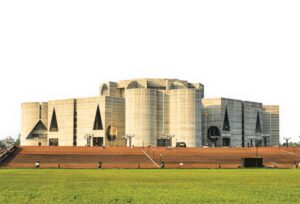
Reflections on FY24 budget
Finance Minister AHM Mustafa Kamal has authored a Taka 7,61,785 crore budget for the new fiscal year (2023-2024) with the vision of building a developed ‘Smart Bangladesh’ by 2041. The budget that was proposed in parliament in 1st June is 15.33 per cent higher than the revised budget of the outgoing financial year (Tk. 6,60,507 crore). “The budget Taka 7,61,785 is 15.2 per cent of the GDP (gross domestic product),” he said while reading out 248-page budget speech. He proposed allocation of a total of Tk 4,36,247 crore for operating expenditures and Tk 2,63,000 crore as the Annual Development Programme (ADP). The target of attaining GDP growth was fixed at 7.5 per cent and containing inflation at 6 per cent. The overall deficit in the budget would stand at Tk 2,61,785 crore, which is 5.2 per cent of GDP. Out of the total deficit, Tk 1,55,395 crore would be financed from domestic sources and Tk 1,02,490 crore from external sources. The finance minister set an estimated revenue earning target of Tk 5 lakh crore for the fiscal. “Out of this, Tk 4,30,000 crore would be collected through the National Board of Revenue and Tk 70,000 crore from other sources.” The Tax-GDP ratio is now only 7% and is proposed to be raised to 10% in the new budget. The finance minister wants to increase the percentage of direct tax to 45 per cent from 35 per cent. However, the budget practically depends more on indirect tax. The finance minister said that commission-based private collectors would be appointed for tax collection. The most talked about issue regarding the budget is meeting the conditions of International Monetary Fund (IMF), which granted a loan of US$ 4.7 billion at the beginning of this calender year. The global agency has put forwarded 38 conditions that have to be met in the next three and a half years for access to the loan. Nearly half of the conditions have to be implemented by the new fiscal year 2023-24. Budget meant for all – rich and poor : Kamal Finance Minister Mustafa Kamal said that the proposed budget has been awarded to all sections of people, including the rich and the poor, while all the projections made in the budget would be attained as like the previous years. He, however, categorically mentioned that the proposed budget had not been framed in line with the IMF suggestions. Kamal said the IMF usually gives suggestions to its member countries on maintaining balance sheet as well as properly maintaining income and expenditure accounts, which he thinks, is a good thing. He added that the IMF not only helps the member countries with credit support, but also extends support in project delivery in a flawless manner. “We can only take their (IMF’s) suggestions which we feel necessary.” The minister proposed imposing environmental surcharges on multiple vehicles. In the budget, the annual tax-free income threshold raised from Tk 300,000 to Tk 350,000 would give some relief to individual taxpayers. Some 50 types of fees would increase that include travel tax. The government estimated that private sector investment would increase to 27.4% of GDP in FY24 while it remains at 21.8% in FY23, meaning that an additional Tk 4,04,097 crore or 41.8% growth is required. Tk 2.63 lakh crore earmarked for ADP The size of the Annual Development Programme (ADP) for the fiscal year 2023-24, is Taka 2.63 lakh crore with the highest allocation of Taka 75,945 crore (29% of allocation) for the transport and communication sector. The ADP for the fiscal year was approved at a meeting of the National Economic Council (NEC) earlier. Out of the original ADP allocation of Taka 2,63,000 crore, an amount of Taka 1,69,000 crore would come from local loan sources while Taka 94,000 crore from foreign loan and grants. Considering an allocation of Taka 11,674 crore for autonomous bodies and corporations, the overall ADP size has stood at Taka 2,74,674 crore. The overall ADP size include an allocation of Taka 8087 crore as foreign development assistance. The number of projects in the new ADP totaled 1,309. – 1,118 investment projects, 22 survey projects, 80 technical assistance projects and 89 projects from the autonomous bodies and corporations. According to the new ADP, the highest 10 allocation recipient ministries and divisions are the Power and Energy Division (Taka 44,393 crore or 17% of allocation), the Road Transport, Highways and Bridges Division (Taka 43,126 crore or 16.5%), the Railways Ministry (Taka 14,960 crore or 5.5%), the Local Government Division (Taka 40,503 crore or 15.5%), the Secondary and Higher Education Division (Taka 14,086 crore or 5%), the Ministry of Primary and Mass Education (Taka 12,018 crore or 4.5%), the Science and Information Technology Ministry (Taka 12,980 crore or 5%), the Health Services Division (Taka 12,209 crore or 4.5%) and the Ministry of Agriculture (Taka 10,707 crore or 4%). Ten projects with the highest allocations in the new ADP are the Rooppur Nuclear Power Plant Project (Taka 9,707 crore) followed by the Matarbari 2×600 MW Ultra Super Critical Coal Fired Power Project with Taka 9,081 crore, fourth Primary Education Development Programme (PEDP-4) with Taka 8,586 crore, Dhaka-Ashulia Elevated Expressway Construction project with Taka 5,870 crore, the Padma Bridge Rail Link project with Taka 5,500 crore, Hazrat Shahjalal International Airport Expansion with Taka 5,499 crore, Dhaka Mass Rapid Transit Development Project Line-1 with Taka 3,911 crore and Line-6 with Taka 3,425 crore, Bangabandhu Sheikh Mujib Railway (Jamuna) Bridge Construction project with Taka 3,778 crore. Some industries may be affected The country’s businessmen are paying the price of the government’s policy on energy, said the deputy leader of opposition in parliament, former minister and industrialist Barrister Anisul Islam Mahmud. The business leaders are not generally viewing the budget in general as business-friendly. Taxes or duties on imports of raw materials and VAT in some sectors are increased, that may affect the prices of some products and these sectors may not attain the capacity to boost, they said. However, the gains tax
Read More
Stymied awhile, Bangladesh trying to make a rebound
Bangladesh, one of the fastest-growing economies globally, had outperformed its South Asian peers and many developed economies until the outbreak of the Covid pandemic in 2020. It has been trying to be back on track after a downturn. Overcoming difficulties, Bangladesh has been able to perform better on some fronts. Needless to say, its macro-economy is standing on a strong footing and relatively stronger. In such a context, finance minister AHM Mustafa Kamal has recently hailed the International Monetary Fund’s (IMF’s) decision to approve a $4.7-billion loan programme to help protect foreign exchange reserves. Bangladesh has to import consumables such as food grains, sugar, edible oil, spices, and raw materials for ceramic industry and other manufacturing sectors, petroleum products, fertilizer, cotton, yarn, chemicals, machineries etc. But prices of essential commodities shot up along with disruptions to the supply chain following the Russian invasion of Ukraine since 24 February 2022. Against this backdrop, trade experts and sector insiders blame the country’s overreliance on imports for its recent f inancial crisis. Poor or no production of raw materials and goods locally is also putting a strain on its foreign exchange reserves. The country’s current account deficit had further widened in October 2022 as imports continued to surge compared to the combined receipts from exports and remittances, analysts said, adding that the main reason behind this surge is the yawning trade gap. According to the central bank data, the current account climbed to $4.5 billion in deficit as of the end of October last year against a deficit of $3.83 billion in 2021. As stated by bankers a few months ago, the pressure on foreign exchange is still there because of the payment obligations against the letters of credit (L/Cs). The global market is currently seeing an unusual movement in the prices of various commodities due to the prolonged Russia-Ukraine war. From fuel to daily essentials, industrial raw materials and machinery, Bangladesh has experienced hyper inflation in its internal market. Figuratively speaking, the fuel price hike is truly fuelling the inflationary pressure. Things have got this bad as the prices of natural gas and electricity along with daily commodities hiked further after the IMF had attached strings with its $4.7-billion loan package. However, businesses believe that the IFM loan will give some relief to the economy, but economic anatomists, experts and businesses warn that the country’s problems will not be solved so easily due to pressure on balance of payments (BoP). Bangladesh has seen sizable growth in exports unlike that in remittance flow but it has seen a major shortage in the supply of foreign currency, especially US dollar, because of the abnormally high growth in imports. There are six sources of foreign exchange earnings for Bangladesh: Exports, Remittance, Foreign Direct Investment, Tourism, Investment income abroad and Foreign loans or grants. But none of the first four are strong, rather in declining mode. Despite huge money laundering abroad, the central bank is yet to open the door for investment there. In this situation, Bangladesh is becoming more dependent on foreign loans for mega development projects. But there are not enough sources of foreign exchange earnings to pay off import bills and foreign debt. Apparently falling into the middle income trap, this crisis may become dire and the exchange rate may have to fall frequently to manage the crisis. As a result, inflation may become more f lagrant. Potential, Yet Troubled Ceramic Industry With increased urbanization and infrastructural development over the years, the ceramic industry is recognised as fast-growing as demand for ceramic products continues to mount. Overcoming many obstacles, more than 70 ceramic (tableware, tiles and sanitaryware) units have been set up in the country for exports and imports substitution with a local and foreign investment of Tk 150 billion. However, an erratic rise in gas prices has become a major problem in this gas-dependent industry. The ceramic sector is a highly potential labour-intensive industry. Since machinery, technology and raw materials (most of which are natural minerals) are not available in the country, the local industry has to compete in both domestic and international markets with the countries, which are rich in raw materials and technology, in selling imported products. As the competing countries have their own machinery, technology and raw materials, they enjoy comparative advantage. It is thus necessary for the home-grown traders to stay buoyant locally and globally by reducing additional expenses. The average cost of production of ceramic products has increased between Tk 5.0 and Tk 7.0 per kilogram. Recently, the government increased the price of natural gas by an average of 150 per cent, and the production of such products has increased by Tk 7.0 to Tk 10 per kilogram for increased gas prices. Balance of Payment Financial experts say macroeconomic shock was not only due only to the war. In fact, the fiscal year 2021-22 witnessed abnormal growth in imports, triggering the highest trade deficit in the country’s history. The balance of payments (BoP) has remained negative in the first half of the current fiscal year, depicting a plethora of challenges Bangladesh is facing in protecting its foreign-currency reserves from depletion as fund outflows exceed inflows. Inflation Experts believe real inflation may be higher than the estimated one, maybe in a range of 12-14 per cent. However, the Bangladesh Bureau of Statistics (BBS) revealed that inflation was estimated at 8.57 per cent in January 2023 while it was 8.71 per cent in December 2022. Inflation will not go down if the dearth of dollars stays. What Bangladesh needs to do is provide the market with adequate supply, otherwise price hikes will continue. Remittance The finance ministry very recently raised the incentive on the remittance exchange rate to 2.5 per cent from the previous 2.0 per cent as money transfers from remitters abroad saw a 21-per cent year-on-year fall in the July-November period. To stop illegal hundi transactions, the government first increased the cash incentive to 2.0 per cent, then to 2.5 per cent. But transactions through hundi
Read More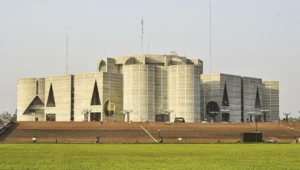
How National Budget can contribute to Ceramic Sector Growth
The current fiscal year’s national budget, passed by parliament on June 30, eyes taming inflation amid other major challenges to an economic rebound from the Covid-19 pandemic and recovery from impacts of Russia-Ukraine war. The annual outlay has finally stood at Tk 6,78,064 crore, 15.2 per cent of the gross domestic product (GDP) and of it, Tk 4,31,998 crore has been allocated for management cost and other non-development expenses and Tk 2,46,066 crore for annual development programme (ADP), which is also called development budget. The size of the budget for the fiscal year 2021-22 was Tk 6,03,081 crore. In the revised budget, it was brought down to Tk 5,93,500 crore. The revenue income in the new budget has been projected to be Tk 4,33,000 crore. The target of the National Board of Revenue (NBR) has been set at Tk 3,70,000 crore, non-NBR tax at Tk 18,000 crore, and non-tax revenue at Tk 45,000 crore. Foreign grant receipt is projected at Tk 3,271 crore. The budget deficit is Tk 2,45,064 crore (without foreign grant) which is 5.5 percent of GDP. To meet the deficit, Tk 2,41,793 crore will come from local and foreign loans, Tk 1,06,334 crore will be borrowed from local banks and the target of foreign loan is Tk 95,458 crore. Tk 40,000 crore will come from non-bank sources. Also, a projected amount of Tk 35,000 crore will come from savings certificates. An amount of Tk 17,000 crore will be spent on foreign loan repayment. The GDP growth target has been set at 7.5 per cent and inflation projected at 5.6 per cent. The finance minister acknowledged inflation as a concern. The government is committed towards controlling inflation by preventing inconsistencies between supply and demand. However, inflation has risen recently due to external and some internal factors. The finance minister, in his budget speech, said the global causes of inflation include rising inflation among trade partners, rising fuel prices, depreciating currency, disruption of the global supply chain, and the Russia-Ukraine war. But no visible adequate measures have been taken in the budget to control inflation. Deficit budgets are driving inflation. “Certainly, we shall be able to transform Bangladesh into a hunger and poverty-free society by achieving SDG (Sustainable Development Goals) in 2030, a higher-middle income country by 2031, a knowledge-based, happy and prosperous developed country by 2041 and a secured delta by 2100,” said Mustafa Kamal in budget session of parliament. Middle class brought under tax net The finance minister said the country’s middle or upper-class population is about 40 million, most of whom are not paying income tax. Efforts are being made to bring taxable people under the tax net by taking necessary steps to prevent tax evasion. As against a total TIN (taxpayers’ identification number) holder of 7 million, only three million are income taxpayers. The number of TIN holders will be raised to 10 million this year. Return submission will be made compulsory with some exceptions. The income tax exemption limit is Tk 0.3 million a year. “Certainly, we shall be able to transform Bangladesh into a hunger and poverty-free society by achieving SDGs in 2030, a higher-middle income country by 2031, a knowledge-based, happy and prosperous developed country by 2041 and a secured delta by 2100.” Huge trade deficit According to statistics from Bangladesh Bank, the nation’s trade deficit in goods was US$33 billion for the last fiscal year 2021-22 when the merchandise trade deficit was $33.25 billion. The current account deficit crossed $18.5 billion compared to $23.78 billion in the year before (FY21). Amid a huge balance of payments deficit, economists emphasised limiting imports and raising remittances. Recent central bank data show a significant increase in imports has made the trade gap bigger, putting pressure on the foreign exchange reserve and exchange rates. Based on the “free on board” (fob) price, the value of goods imported in FY22 was $82.49 billion, as against only $60.68 billion in FY21. Consequently, imports grew by almost 36% in FY22. Income from exporting goods (on a free-on-board basis) grew by 33.45% and reached $49.24 billion in FY22. In FY21, the sum was $36.90 billion. The overall balance deficit totaled $5.38 billion by the end of FY22 whereas there was a surplus of $9.27 billion in FY2020-21. The country received $21.03 billion in remittances in FY22, showing a 15.12 per cent decline over the previous fiscal. The central bank sold more than $1 billion to banks in July when the country received $2.09 billion in remittances, which was 11.76% higher than the amount received in July last year. Bangladesh’s foreign exchange reserves fell below $40 billion for the first time in two years recently. This was due to higher import costs and a weaker Taka against US dollars. The situation occurred due to the dollar’s rise over the past few months, when the central bank took some steps to discourage imports. Bangladesh Bank also encouraged Bangladeshis living and working abroad to send remittances. Ceramic sector needs budgetary support Mr. Mohammad Shirajul Islam Mollah, President of Bangladesh Ceramic Manufacturers and Exporters Association (BCMEA), in his budget reaction, demanded complete withdrawal of 15% and 10% supplementary duties imposed on domestic tiles and sanitary products respectively. He said if this is done, the price will decrease in the domestic market and the level of its use will increase. As a result, the government revenue will not decrease, rather increase overall. Commenting that ceramic tiles and sanitary products are no longer a luxury item, he said, they are considered essential construction materials. These are popular as eco-friendly products as they are helpful in creating a healthy environment. Ceramic is playing a helpful role in implementing the government’s ‘Sanitation for All’ programme. He said the ceramic sector is a labour-intensive industry with great potential. Machinery, technology and raw materials are not available in the country, so they have to compete with rich countries in procuring raw materials and technology as well as selling products. If a partial bond facility is provided along with
Read More
